Matador Network's Blog, page 1245
October 8, 2018
How to bring your dog camping
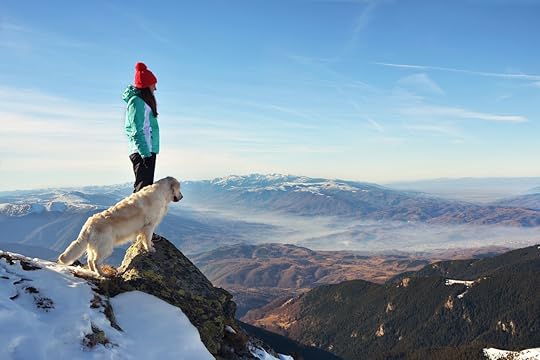
Arrive late at night at a campground with your dog in tow, and others may wonder how you’ll ever get your dog to sleep there rather than back in your warm, cozy house. While squeezing in a tent with your furry friend may not be the most glamorous part of taking your dog into the great outdoors, the next morning, your pup will be in doggy paradise, and it’ll all have been worth it.
Whether at a coastal campground, in the desert, or at a forested mountain spot, the outdoors is where most dogs are in their element. But the outdoors can carry risks for your four-legged companion — like exposure, other animals, cliffs, and thirst — as it does for humans. Here’s how to be sure your dog has just as good a time as you do.
Match the trip to the dog.

Photo: Zivica Kerkez/Shutterstock
When planning any trip with your pooch, ask yourself three questions: 1) Are dogs allowed? 2) Is it safe for my dog? and 3) Will my dog enjoy it? Then think carefully about where you’ll be staying, the sort of activities you have planned, the time of year, and how well-behaved your pup is. You might be able to take a well-trained dog on a canoeing trip, for example, but whitewater rafting trip with a petulant puppy should be a non-starter. If your dog is getting on in years, that planned twelve-mile hike could be ambitious and potentially unsafe for your pet.
Research where you’re going.
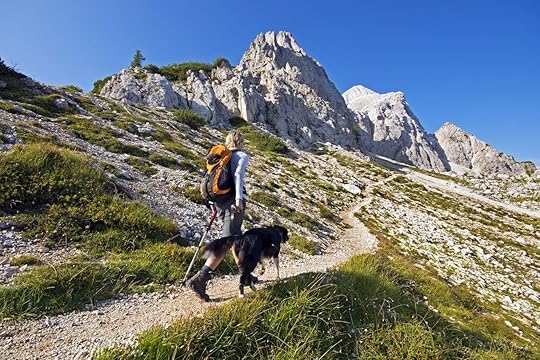
Photo: DUSAN ZIDAR/Shutterstock
Just because dogs love being out in nature doesn’t mean that all outdoor locations are as welcoming to Fido or Fifi as you’d like them to be. Yosemite National Park allows dogs in most campgrounds and developed areas, but dogs are not allowed at a few campsites and on trails — even if they’re on a leash. If you want to hike all day, Yosemite would not be the choice.
US national forests have friendlier dog policies than national parks. In national forests, dogs are allowed on trails and don’t even need to be leashed in some wilderness areas. Canadian national parks also permit dogs on trails, but none of these places let you leave your dog alone at camp — so be sure that all your planned activities are dog-friendly.
Know what risks your dog may be exposed to.

Photo: Joop Snijder Photography/Shutterstock
Once you’ve decided where you’re going, consider the risks your hound may encounter. Find out whether your campsite has shade, what animals are nearby, and even the local flora. Ivy, mushrooms, and certain wildflowers can be lethal to dogs. Even if your pet isn’t one to munch on foreign plants, in places like California, they can bring plant toxins back to humans in the form of poison oak or poison ivy oils on their fur. You should also consider whether cliffs or gulches can endanger your off-leash puppy.
Dehydration can also be a major risk, so it’s very important to have enough fresh drinking water to share between the two of you. It may be tempting to let your dog drink from streams or ponds, but that puts the dog at risk for getting giardia — a parasite that lives in the intestines and causes diarrhea.
Pack everything your dog might need.
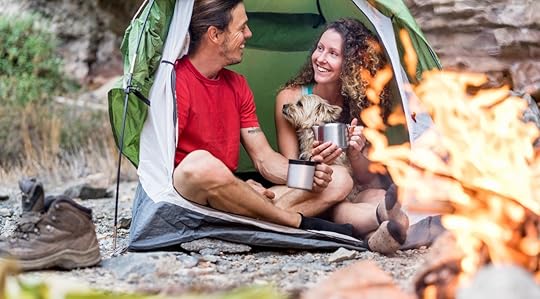
Photo: DisobeyArt/Shutterstock
Dog collar.
Be sure it has their name, registration details, and contact info.
Photo.
Keep a photo of Spot in your phone or even printed on paper. In case Spot gets lost, you can show his or her picture to the rangers or nearby campers.
Leash.
This should go without saying. Dogs must be leashed in many areas, and even where being unleashed is permitted, letting your dog run free increases the risk of them confronting a coyote or cougar.
Food and water.
The average daily water intake for a dog is about three to six ounces for every five pounds of body weight, so fill containers with six ounces of water per five pounds of dog — plus a bit more for emergencies.
Dog bags.
Dog poop in national parks adds foreign bacteria to the ecosystem and pollutes waterways. Just like back in the city, you should clean up after your dog.
Snake repellent.
This is a good one for outdoor enthusiasts in snake-prone areas. Beyond keeping your hound safe, snake repellent will keep you protected, as well.
Shade canopy.
If you’re camping somewhere with little shade, a shade canopy is a good investment and has the added benefit of keeping you cool, as well.
Dish soap.
If you’re hiking where there’s poison oak or poison ivy, a good wash with cold water (if you have access to running water) and dish soap will wash the poisonous plant oils off their fur.
Favorite toy.
Bring the items that will help your dog feel more at home. Their favorite toy will give them something to play with. Bring frisbees or balls to play fetch.
Doggie bed.
If your little canine has a doggy bed at home, bring it along. You’ll automatically have somewhere at camp they’ll recognise as theirs.
A long rope.
If you’re camping far from others where your dog is permitted to be off-leash, tying them to a tree with a long rope will give them more freedom to explore without getting lost.
Designate space for your dog at camp.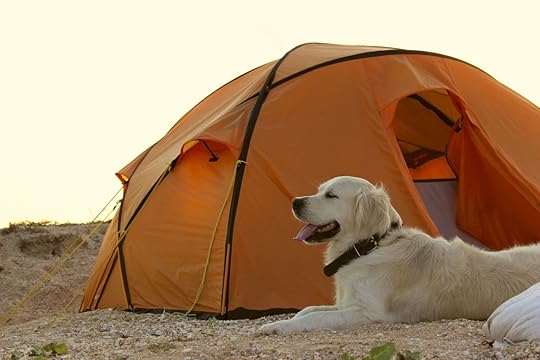
Photo: Toma Stepunina/Shutterstock
Don’t panic if you can’t take all your dog’s worldly possessions. Just make sure they have a designated space wherever you’re staying. Having a small spot that they recognize as theirs, whether it’s their bed or simply a spot of shade where you can easily leash them, will give them somewhere to relax. You may find this useful when it’s time to eat. You can send your canine companion to bed while you’re having dinner, and welcome them back to enjoy the leftovers when you’re done.
Train your dog to get used to your activity.

Photo: Larina Marina/Shutterstock
If you’re lucky enough to be able to take your dog with you on your activity, it helps if you can give them a trial run first. A short canoe trip in shallow water, a quick walk on the trails, or even just camping in your backyard will help you stay calm knowing that your dog won’t get scared or wake up in the middle of the night.
Just like humans, dogs also need to build up endurance for activities, so don’t expect them to be able to do a long-distance trek if the most exercise they’ve ever gotten is a quick jaunt around the block. Also, take into consideration your dog’s breed; certain breeds like greyhounds are more prone to injury than hardy pit bulls and run a greater risk of breaking a bone on a hike. Other northern breeds are more susceptible to overheating. Tiny toy breeds are unlikely to be able to scramble up rocks, and if you have no idea if your dog can swim or not, a camping trip to the lake is probably not the time to find out.
Try to give your dog some routine.

Photo: manushot/Shutterstock
At home, you probably feed your dog at the same time every day. Try to keep it up on your outdoor adventure, stopping during the car trip on your way there at mealtime if need be. If you take your dog out for a walk in the morning at home, do the same on your outdoor adventure. The same goes for taking them to go to the bathroom.
For those rare outdoor trips where your dog can safely and securely be left unattended for a while, be sure you get back at the same time you’d return if you were at home in the city, and feed them at the same time, too. Knowing what time you’re coming back and when they’ll get fed will make your dog less likely to get scared by being somewhere unfamiliar.
To avoid a howling, stressed pup, consider not taking your dog on every single walk around the campground, like if you’re just going to the bathroom or getting more water from a pump. Having your dog follow your every move will just make it more difficult to separate in the event that you need to, such as if you’re going surfing and your dog has to stay tethered under the shade at the beach.
Relax and enjoy the time with your best friend.
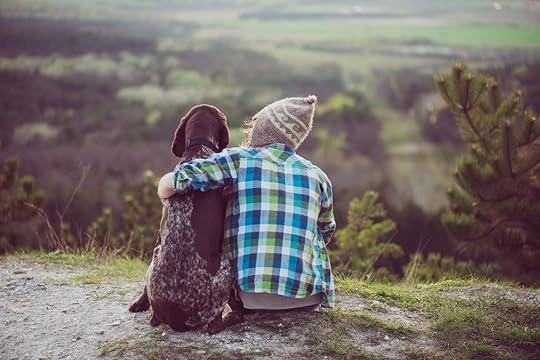
Photo: llaszlo/Shutterstock
Canoeing, hiking, or surfing might be the main focus of your trip, but if you’ve made the effort to bring your dog with you, you might as well both enjoy yourselves. When you explore the local area with your dog, they’ll love being able to make the most of their natural instincts and get in touch with their wild side. Set aside time to do their favorite activities, whether that’s fetch or belly rubs. After a few adventures, you may find that your dog is the best outdoor companion you could ask for. 

More like this: The 7 best places in the world for dog lovers
The post Everything you need to know about taking your dog into the great outdoors appeared first on Matador Network.

'Hunger Stones' warn of drought

An old harbinger of grim news has resurfaced again in the Czech Republic, warning of tough times ahead. In the middle of the Elbe River, a “hunger stone” has just become visible again due to the lowering of the water level. Inscribed by a boatman in 1904 with the words, “Wenn du mich siehst, dann weine” — if you can see me, then weep — the stone is meant to warn against falling water levels and drought. The stone is one of 20 similar boulders in the Elbe dating back to 1616, originally marked by men whose trade and livelihood depended on the river.
Vlastimil Pazourek, head of the museum in Decin, where the stone appeared, told AFP, “Over the centuries, many people earned their living on the Elbe as rafters, and when there wasn’t enough water to float their rafts, they lost their livelihoods… the rafters engraved the dates of those bad years on the soft sandstone boulders.”
View this post on InstagramA post shared by Jason Beatty (@miseryistheriveroftheworld) on Aug 24, 2018 at 10:01pm PDT
Scientists, however, believe that 2018 isn’t just another bad year, but that the stone’s exposure is a sign of climate change. The “hunger stone” was revealed this year after one of the hottest summers on record, during which the Elbe’s water level dropped to just 2.9 feet deep. The river has been an important highway for commerce, with five million tons of goods being transported along the Elbe in the 1990s, but that number has fallen drastically in recent years. And this year, the low water levels have made large-scale river transport impossible.
True to its name, the “hunger stone” seems to have predicted a tough harvest — not just in the Czech Republic but also in Germany, the UK, and other countries in Western Europe. Last year, around 94 percent of Czech farmers reported severe crop damage, and Udo Hemmerling, Deputy Secretary General of the German Farmers Association, told Euronews, “This year we have the lowest harvest of the century.”
And it’s not only drought stones that are resurfacing with the drying of rivers. This year alone, 22 grenades, mines, and other explosives have been found in the Elbe.
If you’re looking for one silver lining to climate-change-induced draught, you’ll find it in wine country. “Less rain, more sun, warmer temperatures, less frost,” are good for the grape harvest, said Vincent Chaperon, a cellar master at Dom Perignon Champagne in France. So if the rivers all dry up and all the crops disappear, at least we’ll have enough wine. 
H/T: Second Nexus

More like this: Chile’s rivers are in danger of exploitation. Here’s how Chileans are saving them.
The post Centuries old “hunger stones” emerge in Czech Republic with dire carved warnings appeared first on Matador Network.

UN report on climate change
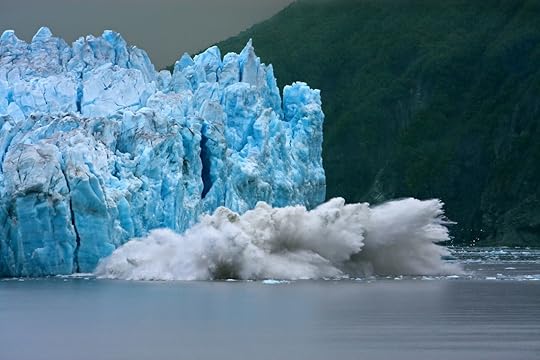
That climate change is a serious, imminent issue isn’t exactly a new revelation, but we may have less time than we thought. A report just issued by the United Nations claims that we only have until 2030 to curb climate change before our planet starts seeing some pretty devastating effects. These include more heatwaves, hotter summers, extreme droughts, rising sea levels, and an increase in superstorms. Based on over 6,000 scientific references from 91 authors across 40 countries, the report focuses on the effect of global warming above pre-industrial levels and calls for dramatic changes to be made.
The report says Earth is currently on track to reach the dangerous threshold of 1.5 degrees Celsius above pre-industrial levels by 2030. This would precipitate a number of harmful environmental effects. “This is concerning,” Andrew King, climate science lecturer at the University of Melbourne, said in a statement, “because we know there are so many more problems if we exceed 1.5 degrees C of global warming.”
To keep the warming around 1.5 degrees C, global net emissions of carbon dioxide would need to fall by 45 percent from 2010 levels by 2030. King added, “The window on keeping global warming below 1.5 degrees C is closing rapidly.”
Failure to address the onset of climate change would not only result in draughts and extreme weather but also the diminishing of our oceans’ coral reefs. Seventy to 90 percent of coral reefs could be expected to die off, including the Great Barrier Reef in Australia. Indeed, the report says Southern Hemisphere countries would feel the most devastating effects, as well as suffering the worst economic impact.
“Every bit of extra warming matters,” said Hans-Otto Pörtner, Co-Chair of IPCC Working Group II, “especially since warming of 1.5 degrees C or higher increases the risk associated with long-lasting or irreversible changes.”
This video provided by the Australian Academy of Science highlights some of the UN report’s key insights. 
H/T: Business Insider

More like this: How to safeguard your ski trip in the era of climate change
The post Earth only has 12 years to curb global warming, according to UN report appeared first on Matador Network.

Best enclosed rooftop bars in NYC
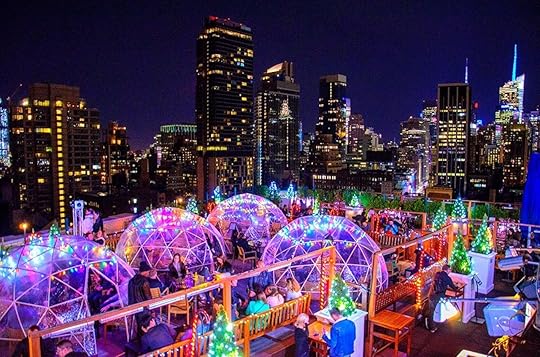
There’s no doubt that New York City has an incredible skyline. Many visitors think that their only chance to see sweeping views is by forking out tons of money to go to the Top of the Rock, the Empire State Building, or One World Observatory, but rooftop bars are actually just as amazing of experiences — plus you get to drink. Far from being just a summer treat, though, there are many enclosed rooftop bars you can enjoy in brisk fall weather and even chilly winter. Here are the six best enclosed rooftop bars in Manhattan.
1. Le Bain
View this post on InstagramA post shared by Le Bain (@lebainnyc) on Sep 22, 2018 at 11:54am PDT
You’ll find one of the best views of the city at the Standard Hotel’s Le Bain. Take note: You’ll have to dress up a bit and wait in line to get in here, but it’s definitely worth it. After a bouncer counts off how many are in your group, you’ll walk through a hall with glow-in-the-dark figures on the walls then get into an elevator — the very same one where an infamous celebrity incident took place. It’ll drop you off at the indoor, Gatsby-like part of the bar, complete with a pool filled with beach balls in the center of the room and disco balls hanging overhead. Walking up a flight of stairs will take you to the outdoor part where there’s fake grass, lawn chairs, and a crepe counter. Shoulder-height glass walls provide you with a safe, amazing view of lower Manhattan, the Hudson River, and part of New Jersey.
Where: 848 Washington St, New York, NY 10014
2. Gallow Green
View this post on InstagramA post shared by Gallow Green (@gallowgreen) on Aug 24, 2018 at 9:55am PDT
The McKittrick Hotel is best known for the immersive experience found in its walls, titled “Sleep No More.” However, on the rooftop is an oasis you’d never expect in such an urban city. The pebbled path is decorated with trellises interlaced with greenery, leading you up to a garden-like setup with potted plants all around, wooden tables and chairs, and views of the West Side. It’s like being at a park without dealing with all of the bugs — and you get to legally drink. You can get the usual variety of drinks here, but the bar has several cocktails inspired by the show, such as the Sleep No More and White Widow. Drinks start being served around 5:00 PM on weekdays and from 11:00 AM on weekends. Weekend brunch here is $39 per person, buffet-style and with live entertainment. Sundays are “Hot Jazz Sunset Sundays,” during which live jazz plays at sunset to get you to stop thinking about the fact that tomorrow’s Monday.
Where: 542 W 27th St, New York, NY 10001
3. Mr. Purple
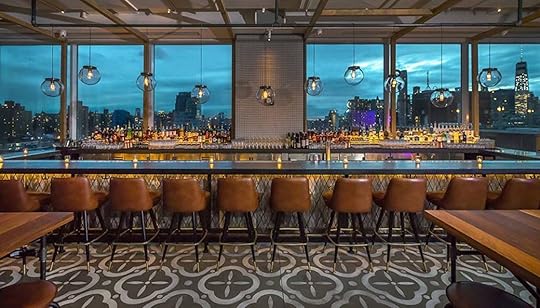
Photo: Mr. Purple/Facebook
Mr. Purple is chic and trendy, fitting right in with the Lower East Side vibe. The bar and restaurant stretches out across multiple areas, providing so much space that you’ll never feel crowded no matter where you choose to post up. There’s an indoor lounge area, two terraces (one with purple furniture to go with the bar’s moniker), and an outdoor swimming pool. Seating ranges from bar stools to garden chairs and a variety of sofas. The menu has a long list of spirits, craft brews, and wine, and it boasts fresh, locally sourced ingredients for both food and drink. Go for the signature Mr. Purple with Casamigos reposado tequila, cranberry liqueur, allspice dram, apple, and lemon.
Where: 180 Orchard St 15th floor, New York, NY 10002
4. 230 Fifth

Photo: 230 Fifth/Facebook
With rooftop bars, there’s always the potential to feel the cold, but 230 Fifth has taken care of that problem for you. It’s New York’s largest outdoor rooftop garden and fully enclosed penthouse lounge, with one floor being entirely enclosed. During the summer, the rooftop garden has large umbrellas to provide shade or shelter from any rain. But when you’ll really want to go is in the fall, when 230 Fifth puts up plastic igloo tents so that you can enjoy the outdoors without freezing. There are 17 heated igloos available, each providing an intimate experience where you can enjoy your time there with friends and strangers alike. Warm up with boozy hot chocolate, Irish coffee, or apple pie cider with vodka while you get an incredibly close glamor shot of the Empire State Building and Midtown.
Where: 230 Fifth Ave, New York, NY 10001
5. Refinery Rooftop
View this post on InstagramA post shared by Refinery Rooftop (@refineryrooftop) on Mar 23, 2018 at 2:47pm PDT
Another Midtown favorite is Refinery Rooftop, atop the Refinery Hotel. The industrial-style decor, brick walls, and retractable glass ceiling act as a nod to the area’s background and building’s history as an old hat factory. Twinkling lights strung about make the open space feel ethereal though you can count on the drinks to keep you grounded. There are 10 signature cocktails, including the I Don’t Give A Fig and Yuzu Margarita, and five varieties of Old Fashioneds, some made with interesting ingredients, such as matcha and bacon.
Where: 63 W 38th St, New York, NY 10018
6. Magic Hour Rooftop Bar and Lounge

Photo: Magic Hour Rooftop Bar & Lounge/Facebook
You don’t have to head out of town to satisfy your desire to visit an amusement park; you can do that right at Magic Hour. Part of the Moxy Hotel in Times Square, the rooftop bar and lounge calls itself an “urban amusement park,” and it certainly lives up to the name. There are five different spaces, each with its own distinctive vibe: the entrance hall, displaying animal statues in different positions; the indoor lounge, with an underground-party, industrial feel; the east side outdoor area, which overlooks the Empire State Building and has elegant fixtures; and the west side, with a rotating seating area that’ll make you feel like you’re on a carousel in the middle of a dance floor. But what contributes most to the idea of an urban amusement park is Magic Hour’s Foreplay, a miniature golf course where giant animals in suggestive poses are what you’ll be putting the ball around. The cocktails here are fun and innovative; some are named things like Float My Boat and We Were on a Break! Others are jumbo-sized, and some are served in a disco ball or a plastic pouch — but all taste delicious.
Where: 485 7th Ave 18th floor, New York, NY 10018 

More like this: The 8 best boutique hotels in NYC
The post The 6 best enclosed rooftop bars with amazing views of Manhattan appeared first on Matador Network.

American Horror Story set locales

Sure, there are plenty of haunted houses, haunted hotels, haunted used car lots, and other haunted places to visit for a scare around Halloween. But how many of them were used as filming locations in the creepiest television show ever to air on basic cable? Location scouts for American Horror Story are some of the best in the business, creating settings for the show that unnerve the audience as much as the talented actors and bizarre plotlines. Over seven seasons, this show has scared us in mental asylums, girls’ schools, mansions, and farm-to-table restaurants. Here are nine sites you can visit and take selfies in front of this Halloween.
1. Briarcliff Asylum

Photo: American Horror Story/FX
Orange County Courthouse
211 W Santa Ana Blvd, Santa Ana, California
Season Two: Asylum
The Massachusetts mental hospital that served as the central point for Asylum (plus a cameo in Freak Show) is actually the classic Orange County Courthouse in Santa Ana. The Romanesque Revival structure dates back to 1901 and still serves at the seat of OC county government. If you’re down to travel and want to see something creepier, the inspirations for the Briarcliff Asylum were actually the Danvers State Hospital in Massachusetts and the Willowbrook State School in New York.
2. Delphine LaLaurie’s House
View this post on InstagramA post shared by Tiffany Todd (@mswriterlygirl) on Oct 4, 2018 at 9:37am PDT
LaLaurie Mansion
1140 Royal Street, New Orleans, Louisiana
Season Three: Coven
Of all the twisted, haunted legends of New Orleans, Delphine LaLaurie’s might be the most disturbing. During the early 1800s, she kept slaves in tiny, confined spaces, torturing, mutilating, and murdering them for her own psychotic entertainment. The atrocities were discovered during a fire at the mansion, where slaves were found trapped in the attic, chained to stoves and dismembered in various ways. Kathy Bates — who does deranged old lady better than anyone — brought a fictionalized version of LaLaurie to life, and though no episodes were filmed inside, the exterior is still a popular tourist stop.
3. Mott Manor
View this post on InstagramA post shared by The Iconoclast (@youarenotmurph) on Oct 6, 2018 at 10:36am PDT
Longue Vue House & Gardens
7 Bamboo Road, New Orleans, Louisiana
Season Four: Freak Show
The aristocratic mansion of Glorian and Dandy Mott that was the setting for Freak Show is set in Florida. But the actual structure used for exterior shots is a grand home and gardens in the heart of New Orleans, called Longue Vue House & Gardens. The house took three years to build, completed in 1942, and has 20 rooms and four lush gardens, including one that still grows food. But don’t expect the inside to look anything like the bizarre mansion you saw on TV; a tour of Longue Vue displays a house full of the original furniture, mostly English and American antiques with European carpets.
4. Miss Robichaux’s Academy for Exceptional Young Ladies

Photo: American Horror Story/FX
Buckner Mansion
1410 Jackson Ave., New Orleans, Louisiana
Season Three: Coven
Some people just can’t stop working, even when they’re dead. Such is the case with Miss Josephine, the ghost who haunts Buckner Mansion, a plantation-style home in the New Orleans’ Garden District that served as Miss Robichaux’s Academy for Exceptional Young Ladies in Coven. Miss Josephine, a former slave in the house, has allegedly been spotted sweeping floors and standing on the stairs, leaving a mysterious lemon-fresh scent wherever she traipses. Despite the ghosts, the mansion was occupied by its original owners — the Buckner Family — until 1923 when it was taken over by the Soule Business School, which closed in 1983. If you’re not afraid of ghosts, you can rent the historic mansion out for $4,700 a night.
5. Hotel Cortez
View this post on InstagramA post shared by Griselda (@littlegris) on Aug 7, 2017 at 10:01pm PDT
James Oviatt Building
617 S. Olive Street, Los Angeles, California
Season Five: Hotel
The Hotel Cortez was almost entirely filmed on a soundstage, which makes visiting the swanky Art Deco-inspired murder hotel impossible. The exterior of the hotel was filmed at the James Oviatt Building, an Art Deco highrise in downtown Los Angeles. But that really isn’t the location you should be visiting. Though nothing was filmed there, the infamous Hotel Cecil (now known as Stay on Main, also in downtown Los Angeles) actually inspired the events of Hotel. Originally a swanky, 1920s LA hotspot, this hotel turned into a flophouse after the depression and has seen its fair share of suicides, murders, and mysterious deaths.
Night Stalker Richard Ramirez used the hotel as a home base during his serial killing spree, often dropping his bloody clothes in the dumpster outside the back entrance. Most recently in 2013, Canadian student Elisa Lam went missing. When guests complained of low water pressure and strange-tasting water, investigators went to examine the hotel’s water tank and found Lam floating inside. Elevator camera footage later showed Lam pressing every button on the elevator, then crouching in a corner, before furiously gesturing to someone outside. Her case has never been solved.
6. Roanoke
View this post on InstagramA post shared by Chris Blocker-Brodfuehrer (@thepfk1978) on Sep 9, 2015 at 12:07pm PDT
Ft. Raleigh National Historic Site
1401 National Park Drive, Manteo, North Carolina
Season Six: Roanoke
The dual-track theme of My Roanoke Nightmare was set in a house constructed for the express purpose of filming the show, somewhere in a forest near Santa Clarita. But the site of the original lost colony of Roanoke is the Ft. Raleigh National Historic Site on the coast of North Carolina, where John White returned after a two-year supply run to find the entire colony vanished. His only clue to its disappearance: the word CROATOAN scrawled on a tree. AHS used the story as the inspiration for a season of historical fiction, where current residents grapple with ghosts from the past.
7. The Butchery on Main
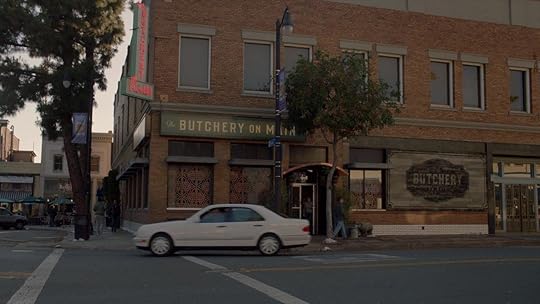
Photo: American Horror Story/FX
Corner of Chapman Street and Glassell Ave., Orange, California
Season Seven: Cult
Funny that the place where poor Roger the sous-chef found himself hanging from a meat hook in Cult is actually a cosmetology school in Orange County. But such is the magic of Hollywood. The historic brick structure in Old Towne Orange was used as the exterior for Ally and Ivy’s restaurant, and during filming, it drew regular crowds to sometimes-sleepy Orange. It has no real haunted history nor ghostly lore and was most recently home to a cosmetology school, but it’s still a scenic location to snap a picture in front of.
8. Ally and Ivy’s House

Photo: American Horror Story/FX
1530 N. Orange Grove Ave., Los Angeles California
Season Seven: Cult
Had Ally and Ivy been commuting in real life instead of simply cruising the streets of Brookfield Heights, the drive from LA to Orange would have killed them long before the sinister clowns could. The house used for the exteriors of their home in Cult sits about 40 miles up Interstate 5 or about three hours in traffic if you hit rush hour on a Friday. The maddening traffic might be why this neighborhood seems to house so many crazies: This house, as well as the one across the street, was also used in the filming of John Carpenter’s Halloween.
9. The Murder House

Photo: American Horror Story/FX
Alfred Rosenheim Mansion
1110 Westchester Place, Los Angeles, California
Season One: Murder House
To see where it all began, head to the Alfred Rosenheim mansion — the setting of the notorious Murder House from AHS’s first season. Originally designed in 1902 by the eponymous architect as his private home along billionaires’ row in Los Angeles, it later belonged to actor Edward Everett Horton in the 1930s before turning into a convent in the latter part of the 20th century. It’s adorned in Tiffany stained glass, has six fireplaces, a solarium, and a gold-leafed ceiling. American Horror Story scouts weren’t the first to appreciate this mansion’s creepy façade, either; it’s also been used to film episodes of The X-Files, Buffy the Vampire Slayer, and other paranormal classics. The house is privately owned, but you can still see the creepy exterior. 

More like this: 8 horror movie locations you can visit in real life
The post 9 American Horror Story filming locales you can visit this Halloween appeared first on Matador Network.

How to deal with travel disasters
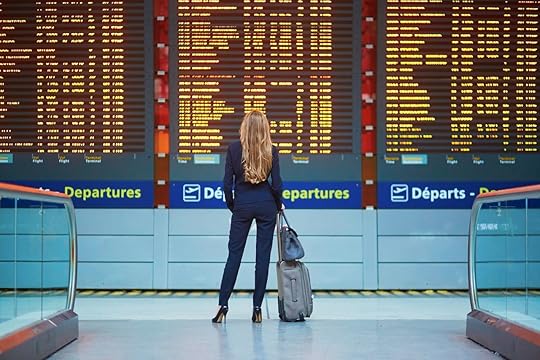
Travel disasters aren’t exclusive to the months of November and December. But, during the holidays, huge crowds and bad weather can combine to create an unusually high frequency of major inconveniences. Most of the time, there’s nothing we can do to prevent the disasters, but how we handle them can make the difference between a mild disturbance and the airlines ruining Christmas.
The first and most important rule in handling any holiday travel blip is to be overly nice and polite to the beleaguered customer service representatives and ticketing agents. They have the power to make your trip go smoothly, and having an attitude with them does nothing to make that possible. Beyond being nice, you should know certain rights, regulations, and industry practices so you get what you deserve when things go wrong. From cancelled flights to vanishing hotel reservations, here’s how to handle all kinds of travel disasters that can befall you during the holidays.
Flight is cancelled due to weather.
The good news is that airlines will rebook you on the next available flight to your final destination, once the weather has passed. The bad news is sometimes this requires waiting on a rebooking desk line that looks like a shoe store when they drop the new Yeezys. But you don’t have to! Modern technology often allows you to rebook online or even using the airline’s app. Or if you remember how to use a telephone, you can also call the airline’s customer service line. You might be on hold for a while, but at least you can pass the time at the Sam Adams Brewhouse.
Even if the airlines can get you rebooked, they’re not responsible for putting you up for the night. So don’t expect — or really even ask for — a hotel room. You’ll either need to shell out for one yourself, sleep on the airport floor, or call your friends and look for a place to crash. This also applies for air traffic control delays, and other situations the airline deems “outside its control.”
Flight cancelled due to the airline.
Of course flight cancellations aren’t always due to freak snowstorms. Sometimes they’re due to crew rest issues, mechanical issues, backed-up toilets, or pretty much any other reason an airline decides to cancel a flight. In these cases the rebooking process is the same as with weather: the airline will rebook you without a fee, but you’ll need to take matters into your own hands to make sure it gets done to your satisfaction.
There are no regulations stating airlines must give you accommodations in these cases, but most airlines will in the name of customer service. They might not offer it up right away, and getting said hotel might involve waiting for the dreaded rebooking desk. You can also try asking your gate agent or a ticketing agent in the front of the airport. If you ask nicely, they can probably help you out.
Flight delayed with possible missed connection.
Avoiding connecting flights during the holidays is more important than any time of year, since you’ll have tens of thousands of other people hustling through O’Hare and DFW trying to make their connections too. Also, with hectic holiday scheduling, airlines are less likely to hold a plane for connecting passengers.
The good news is airlines will automatically rebook you on the next available connecting flight to your final destination, often without you having to even make a phone call. Though if you want to be proactive about it, you can call and change your connection as soon as you learn of the delay with no change fee.
If the next available connection is the next day, the same guidelines apply as they do with cancellations in regards to hotels. If it’s weather-related, you’re on your own. If the airline caused it, they SHOULD put you up somewhere, though again they are not required to.
Your luggage gets lost.
You have a lot more rights when the airlines lose your luggage than you think. But to take advantage of them, you have to file a claim before you leave the airport. Go to the baggage office and you’ll get a case number, which you’ll use to track your bags and file claims for damages.
The airline is required by law to compensate you for any reasonable expenses you incur as a result of lost luggage. So if you have to go out and buy a shirt your mom would approve of for Thanksgiving dinner, the airline’s on the hook for that. Ditto for any shoes, pants, toiletries, cosmetics, or other necessities you’ll need while your bag is MIA. The key word here is “reasonable,” though. Don’t treat a lost suitcase as carte blanche to get yourself a new wardrobe.
If all your Christmas presents were in your suitcase and it shows up a day late, the airline won’t reimburse you for those, nor will it compensate you for the whining of your nieces and nephews when you explain Santa got lost on his way down the chimney.
Keep all your receipts, and file a claim as soon as possible. Most airlines limit you to a week.
You get bumped from your flight.
After the United Airlines passenger-dragging fiasco, airlines have severely cut back on overbookings. But if there’s ever a time you’ll have more seats sold than seats available, it’s during the holidays. On the off chance you’re involuntarily moved off your flight, you do legally have to get off the plane as you agreed to it in your contract of carriage.
That said, the airline is also required to compensate you for the trouble, most of the time. If they put you on a flight that gets you to your final destination within an hour of your original flight, you get nothing. Good day, sir — or ma’am.
If you reach your final destination between one and two hours of your original time (or two to four hours on an international flight), you’re entitled to 200 percent of the ticket price, up to $650. More than two hours domestic and four hours international, you’re entitled to 400 percent, up to $1,300, plus a full refund of your original ticket.
The airlines might try and offer you less, and will sometimes offer money on the spot if you’re taking less than what you’re entitled to. It’s up to you whether you accept it or not, but know that once you do, that’s likely all you’ll be able to collect.
Rental cars are unavailable.
Those old enough to remember the original run of Seinfeld will recall an episode where Jerry arrives at a rental car counter only to find no cars are available — even though he has a reservation.
“What’s the point in reserving a car,” he asks in only the tone Seinfeld can, “if you don’t have a car reserved? That’s the point of a reservation.”
Of course, during the holidays the dreaded “No Cars Available” signs are out in force, and your family of six may be stuck in a Prius — or, worse, in no car at all. Because rental cars are one of the few travel sectors left that let customers cancel without a fee, they take far more reservations than they have cars. Which means sometimes the car you reserved isn’t available.
It’s industry practice to upgrade you to the next class up if the car you reserved is out. If they can’t do that, typically they will rent one for you from a competitor, even if doing so requires them to pay for a ride to the competitor’s lot. None of this is law, but rather industry standard practice, so if the agent doesn’t offer it up you have no legal recourse. But politely ask for a supervisor and they will probably help you out.
You miss your flight.
Airlines actually have an unofficial policy called the “flat tire rule.” It basically states that, if you show up at the airport within two hours of your scheduled departure, they can put you on standby on the next available flight at no extra charge. Of course, during the holidays when flights are booked solid, this might mean standing by all day since nearly every flight in completely full.
Also, customer service, ticketing, and gate agents can put you on the next flight at no additional charge, but they don’t have to. So, once again, be nice, polite, and apologetic for being late and you’ll get a lot further.
American Airlines offers a same-day confirmed seat option, allowing you a confirmed seat the same day for $75. Again, this is assuming seats are available. Southwest Airlines asks you to call the airline within ten minutes of departure if you think you’ll miss the flight so you can be rebooked. Southwest doesn’t charge change fees, so the process is much simpler.
And remember: if you’re checking a giant duffle bag full of presents, airlines have bag check cut-off times too. So even if you show up with time to get on the plane, you’ll need more time if you’re checking a bag.
Hotel doesn’t have your room.
Hotels, like rental cars and airlines, regularly overbook themselves too, between two and 10 percent of their capacity depending on the time of year. During holidays, where no-shows are less common, arriving at a hotel with a reservation doesn’t always mean there’ll be a room for you. The practice is legal and there’s no regulation for what hotels must do other than refund your money. But common practice is for them to find you a room at a nearby hotel.
Front desk personnel won’t always do this automatically, of course, but if you ask them to “walk” you to another hotel, they’ll know you know what’s up. That’s industry jargon for finding you a room elsewhere. They’ll probably also pay for your ride there, but you need to remain calm and ask for both nicely.
Of course, sometimes the hotel isn’t oversold at all, but the reservation you made through an online booking service isn’t in their system. If this happens, rather than getting infuriated at the poor front desk clerk, call the travel agency you used (most have 24-hour customer service numbers) and ask them to figure out what went wrong. If they can’t get your reservation figured out, they’ll book you at another hotel. 

More like this: Why 87% of people don’t file claims for lost luggage, and how to file one
The post How to handle every travel disaster that happens during the holidays appeared first on Matador Network.

United Airlines to eliminate fees

United Airlines is really embracing its chill, “whatever, man” California personality by eliminating service fees for surfboards on its planes. The rule change is in celebration of California’s recent naming of surfing as the state’s official sport. Effective immediately, passengers traveling with surfboards, wakeboards, or paddle boards on United Airlines or United Express flights that begin or end in California will be spared the previous $150 or $200 service fees (although checked bag fees still apply).
The move sets an encouraging precedent for surfers, who might look forward to other airlines potentially following United’s example. Janet Lamkin, United’s president for California, said in a statement, “We want to make it easier for customers to surf our beautiful beaches, whether they’re visiting or call the Golden State home.”
United is also taking steps to promote the preservation of California’s waters, donating $50,000 to Sustainable Surf — a California-based innovation lab. By focusing on educational programs that address the environmental impacts on the ocean, it strives to solve the ocean health crisis by 2050. Sustainable Surf co-founder Michael Stewart said in a statement, “We see a very close alignment between our work and United’s Eco-Skies program. We are looking forward to partnering with United to better enable our shared goals and values of keeping the world clean.”
Now, the eyes of the surfing community are on other airlines to follow suit, especially those that serve popular surf destinations. 
H/T: Teton

More like this: How to get started surfing
The post United Airlines eliminates surfboard fees on California flights appeared first on Matador Network.

October 5, 2018
The 7 most haunted bars in the US

Every town in America seems to have its own ghost stories. Often, those stories revolve around children’s tales passed on from generation to generation. Some of the stories, however, are only for people of the legal drinking age. In small towns and big cities, there are bars where the patrons allegedly never left. These are the seven most haunted bars in the US.
1. Kells Irish Pub in Seattle, Washington
View this post on InstagramA post shared by Kells Irish Restaurant & Bar (@kellsirish1916) on May 6, 2018 at 12:19pm PDT
Like many of the haunted bars on this list, Kells’ haunting traces back to what the building was originally used for. In this case, it was the E. R. Butterworth and Sons Mortuary, which was built for people who died in the early 1900s from disease and mining accidents.
Spirits from those bodies never left, according to some patrons and previous owners. Mirrors inexplicably break along with glasses that slide off the edge of the bar and crash to the floor. A thin man has been spotted in the kitchen, and the ghost of a child has been seen on the second floor. Many of the spirits are bone-thin, which traces back to the mortuary days and practices of Dr. Linda Hazzard. Hazzard “treated” patients by starving them with a diet solely made up of bone broth.
2. Shaker’s Cigar Bar in Milwaukee, Wisconsin
View this post on InstagramA post shared by Rachel Russell (@rachelrussell08) on Aug 26, 2018 at 4:08pm PDT
Shaker’s is part restaurant, part cocktail bar, and part cigar bar. According to owner Bob Weiss, it’s 100 percent haunted. Weiss isn’t afraid to let people know, either, and he operates a business called Hangman Tours in and around the building where people can learn about Jeffrey Dahmer and the area’s brothel history in the 1920s.
According to Weiss and visitors, there are at least 14 spirits that hang around. They date back to the early days of the building, which was constructed as a cooperage house for Schlitz Brewery in 1894. Al and Frank Capone bought it in the 1920s and ran it as a speakeasy. That’s when the murders started happening. The first was a 16-year-old girl named Molly Brennan who was working as a prostitute on the third floor. The bones of other bodies were found built into the walls when Shaker’s was remodeled in the late 1980s.
The bar takes full advantage of its spooky reputation today. If you go on a tour, you can take along a special-priced beer or Death in the Absinthe cocktail made with prosecco and European absinthe. You can also stay the night in the third-floor penthouse — if you sign the agreement that you won’t hold the bar accountable for any physical or psychological damage.
3. The Tavern in Austin, Texas
View this post on InstagramA post shared by The Tavern (@tavernaustin) on Sep 12, 2014 at 1:23pm PDT
The Tavern opened in 1933. Well, it officially opened in 1933. Like so many of America’s historic bars, The Tavern operated as a speakeasy during Prohibition. Those were the bar’s seedy days. It was a real speakeasy, not what the modern cocktail movement has made us think of speakeasies. The second floor of the building also served as a brothel. According to legend, a sex worker named Emily was killed during a bar fight that she (probably) had nothing to do with. Some people say she stuck around, and she appears to be pretty bored with the German-style sports bar The Tavern has turned into. Guests have reported Emily pinching them and changing the channel, and a few people have claimed to see her ghostly figure.
4. Stone’s Public House in Ashland, Massachusetts
View this post on InstagramA post shared by Alexandra Wallenstein (@alewis74) on Sep 14, 2018 at 5:25pm PDT
John Stone built what is now Stone’s Public House in 1832. It was designed to pull in a crowd from the railroad that went straight through the town, and according to the history on Stone’s website, it was successful. It changed ownership numerous times over the years until it landed in the hands of Leonard Fournier in 1976. Fournier told the local paper that weird things were happening around the bar, and he brought in paranormal investigators in the ‘80s. They found numerous spirits of “mostly sullen male phantoms.” One guy in particular, Burt Philips, died there in the 1890s. Now he sticks around because he was the type of drunkard that bars just can’t seem to get to get rid of.
There are also the spirits of a chambermaid named Sadie, a man who was killed on the property named Michael, and three or four other nameless ghosts. Those who are not named reportedly turn lights on and off, drop birdseed from the ceiling, and mess with the water.
5. Captain Tony’s Saloon in Key West, Florida
View this post on InstagramA post shared by David Bonetti (@bonettivideography) on Sep 23, 2018 at 10:56am PDT
The building that is now Captain Tony’s used to be an ice house, a cigar factory, a speakeasy, a brothel, and, if you go way back to the building’s history, a city morgue. Legends like Ernest Hemingway, Truman Capote, Shel Silverstein, and Jimmy Buffet have all stopped by for a drink. But it’s the people who stopped by and never left that make Captain Tony’s special. In 1851, there was a “hanging tree” on the property. Sixteen pirates and a woman who killed her husband and children with a knife were hung on the tree. It seems the hanging tree’s location was mostly one of convenience since the building was also the morgue at the time.
In 1865, a hurricane swept away most of the bodies in the morgue. When the water cleared, locals found a body outside of the building. They buried it and built a wall with bottles of holy water around the new grave site. The site became Captain Tony’s in 1958, and over time, the bar expanded around the holy water walls and former hanging tree. Up to 15 skeletons were found during expansion, making the place ripe for ghost stories. One in particular stands out, though: that of the woman from the hanging tree, known as the Lady in Blue because she chopped up her family while wearing a blue dress.
You might catch a glimpse or feel a tap on your shoulder from the Lady in Blue if you visit Captain Tony’s today. Or the tap could be from one of the many bras that now dangle from the hanging tree. You be the judge.
6. Tiger’s Tap Room in the Hotel Congress in Tucson, Arizona
View this post on InstagramA post shared by Hotel Congress (@hotelcongress) on Sep 19, 2018 at 12:55pm PDT
There are four bars in the Hotel Congress, but only one of them has a haunting reputation: Tiger’s Tap Room. The bar is named after Tom Ziegler, a bartender who’s worked there on and off for the last 50 years and is known simply as Tiger. Most of the hauntings happen upstairs in the hotel (specifically room 242 where a woman shot herself to death), but sometimes people feel spirits wander down to the bar to rattle some floors and shake some doors.
7. Simon’s Tavern in Chicago, Illinois
View this post on InstagramA post shared by Jacob Grier (@jacobgrier) on Sep 26, 2018 at 1:55pm PDT
Simon’s officially came on the Chicago scene in the 1930s, but this being Chicago, the bar has quite the Prohibition history. Once it went legit, though, it was a haven for the area’s Swedish immigrants. It’s the local bar for many in the area now, including (allegedly) the ghost of a woman in a love triangle.
The haunting started with a mural called “The Deer Hunters Ball,” according to owner Scott Martin. The painting depicts one of the traditional parties held every year on the last weekend of deer hunting season in the ‘60s and covers a whole section of the wall. The face of one of the women was cut out of the mural and replaced, however. That married woman was the person with whom the son of the bar’s eponymous owner, Roy, was having an affair. Roy and the woman got into a car accident in the 1960s, and she died, prompting the husband to plot Roy’s murder. The murder never occurred, and the family cut the woman’s face out of the photo to ignore the problem.
When Roy died, the current bar owner noticed Roy’s face in the mural suddenly had a tear around it. That section of the painting was coming off, just like how the woman’s face had been cut out. Today, the story is that the two lovers have been reunited. Some believe that ended the haunting, but others say it means the ghosts still come around — they’re just happy now. 

More like this: 9 haunted hotels you can actually spend the night in
The post The 7 most haunted bars in America appeared first on Matador Network.

How to file a claim for lost luggage
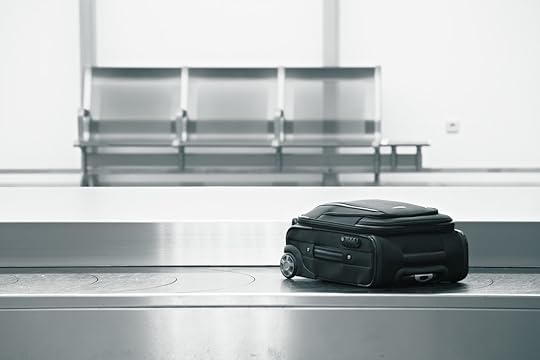
Airlines have us pretty beat down. As seat sizes have shrunk, fees have gone up, and service has become abysmal, we now just accept getting screwed over as part of the air travel experience, like Biscoff cookies and safety demonstrations.
For example: Let’s say you’re one of those crazy people who still checks a bag, and it didn’t show up with you on your big ski trip to Steamboat Springs. You’re now stuck in a strange city with nothing but your laptop and a couple of Clif bars but still have a big day of skiing set for the next morning. Not wanting to hit the slopes in the t-shirt and warm-ups you wore on the plane, your only option is to go out and buy some new ski clothes — which, as anyone who’s ever skied knows, aren’t cheap.
You know the airline has to pay for that, right?
If you said no, you’re not alone. A recent study of 2,000 air travelers from the passenger rights organization AirHelp found that 87 percent of people who had lost, delayed, or damaged luggage didn’t file a claim with the airlines to compensate them for the inconvenience. An especially startling number given that the maximum some of them could have gotten is upwards of $3,000.
“A lot of people don’t know if an airline loses your luggage and you incur extra costs as a result, the airline is responsible for reimbursing you for those costs,” AirHelp CEO Henrik Zillmer told us. “People think it’s difficult to file a claim for compensation or simply aren’t informed about how to go through the process of filing a claim.”
Delving a little deeper, the AirHelp study found that 41 percent of the respondents didn’t think they were entitled to compensation, meaning we pretty much assume we have to just stand there and take it when our luggage gets lost. And the airlines don’t owe us squat for our trouble.
Another 31 percent weren’t aware that they had any rights when their luggage got delayed, further showing how downtrodden we’ve become. Another 29 percent didn’t know how to file a claim.
“Airlines really must do a better job of educating people about their rights,” Zillmer added.
By why would they?
Airlines won’t tell you how to get money for lost luggage. But we will.
The Montreal Convention of 1999 stipulated that airlines in over 120 countries must reimburse you up to the equivalent of $1,700 for international flights and up to $3,300 for domestic flights. But the airlines aren’t lining up to hand you a check. They might offer you $50 at the counter to cover “incidentals” like deodorant or a fresh pair of skivvies. But you’d be hard pressed to find someone in the baggage office who’ll eagerly tell you that you’re entitled to up to three grand.
In their defense, it’s not in their interest to have you know such things. But if this does happen to you, here’s how you make the claims process go as smoothly as possible:
1) File a lost luggage claim before you leave the airport.
As in do not pass go, do not collect a measly $50 — go directly to the baggage office and tell them your bag is lost. You’ll get a claim number that will help you track your bag, which you’ll need to file a claim for all the replacement stuff.
2) Take photos of any damaged luggage IMMEDIATELY.
If your luggage did show up, but it’s damaged, get pictures right away. Oftentimes airlines give you only 24 hours to report damaged luggage, so as soon as you notice that missing wheel, snap a pic and get claiming.
3) Go out and buy what you need, and only what you need.
Airlines are only required to reimburse you for reasonable expenses related to your lost luggage. So if you thought this was your big chance to go out and buy a Canada Goose to replace your ratty ten-year-old ski jacket, think again. You can try explaining that you have expensive taste and that you simply cannot ski in anything less than a $900 coat to the airline. But that’ll only make your claim harder. Basic rule: The less you spend, the easier it’ll be to get money.
4) Keep your receipts.
Seriously, we cannot stress this more.
5) Go online or call and file your claim.
You’ll need a scanned copy of your receipts, plus any photos of damage. Most major airlines have designated web pages to file claims, and most of the time they get back to you within one to two business days. You can also call each airline’s baggage customer service number, and they will point you in the right direction. Does it take a while? Yes, it does. But when you’re talking about a couple thousand dollars, it’s definitely worth the time.
6) Wait for the airline to process your claim.
If your claim is small, sometimes a good customer service rep will process it right on the phone and get the process of getting you paid moving. For larger claims, it can take a while to review. Make note of your claim number and don’t wait to follow up.
7) Receive payment.
If you don’t get payment, or what you think is a reasonable claim is denied, call the airline and find out why. If the airline still refuses to pay, you can sue in small claims court where no lawyer is required. Seems like a hassle for you, but it’s a much larger hassle for them and will probably get you money faster.
Reimbursement isn’t limited to luggage.
There are other things you’re entitled to, as well, under the Montreal Convention.
“No matter what type of issue is involved — flight disruptions or baggage problems — the Montreal Convention is there to help you,” says Zillmer. “If you miss a prepaid reservation, have to pay for an extra night at a hotel, or rack up any other unforeseen expenses due to air travel problems, you can get reimbursed. You can also get reimbursed for any loss you suffered as a result of a delay or lost luggage.”
So if you opted to miss your ski day rather than hit the slopes in claim-friendly, inexpensive ski gear, the airlines would be on the hook for your unused lift tickets, too.
There are, of course, rules. You need to report any damages within seven days of loss; for lost luggage, that extends to 21 days (remember, damaged luggage must still be 24 hours). If after 21 days your bag still isn’t with you, it’s considered lost, and you have no limit on how long you have to file a claim. But after two years, Zillmer says most of those rights are extinguished.
With baggage, like most things in life, knowledge is power. And since the airlines aren’t going to tell you how much money you’re owed when they lose your bag, it’s up to you to know how much you deserve. Filing a claim isn’t much harder than booking a flight, and though it might require some time on the phone with customer service, don’t let that stop you from following through. The airlines get stuff over on us all the time, and getting some new stuff when they lose our bags is a small victory we should all appreciate. 

More like this: The 7 worst airports in the world for getting an Uber (and how to get one)
The post Why 87% of people don’t file claims for lost luggage, and how to file one appeared first on Matador Network.

Best places to see wild polar bears
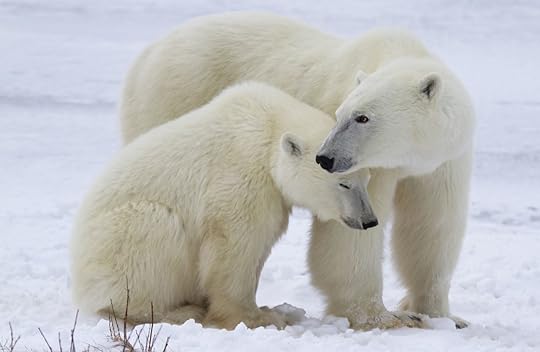
Though born on land, polar bears spend most of their lives on the ice floes of the Arctic, infrequently encountering humans in the desolate tundras of the northern hemisphere. That said, plenty of viewing opportunities exist around the world where people are able to witness these unique animals uninterrupted in their native habitat.
Keep in mind that polar bears are large, unpredictable animals, and endeavoring to see them should be done with an awareness of how they behave and the risk that comes with proximity. In July, a polar bear was shot down when cruise employees entered the domain of the unlucky animal in the Svalbard archipelago; therefore, we have taken care to ensure that the experiences listed below take an ethical approach to their business.
1. Churchill, Manitoba, Canada
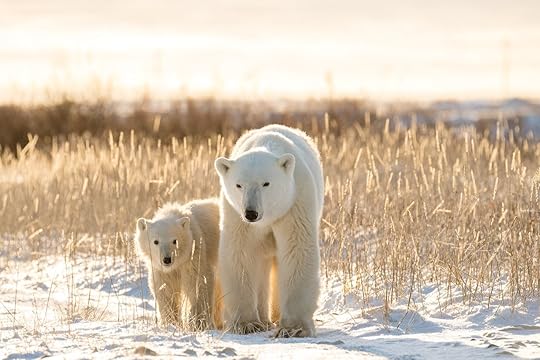
Photo: massimofusaro/Shutterstock
With a nickname like the “Polar Bear Capital of the World,” Churchill tops the list for wild-polar-bear-viewing opportunities. Churchill Wild is the preeminent Arctic safari outfitter with tours ranging from photography-focused excursions to lodging in luxury while spotting the great white bears. With a strong commitment to sustainability and responsibility, the happiness and safety of both guests and animals are paramount, so you can explore the ice with full confidence in your host. This is the best spot for increasing your chances of glimpsing a polar bear in the wild.
2. Svalbard, Norway
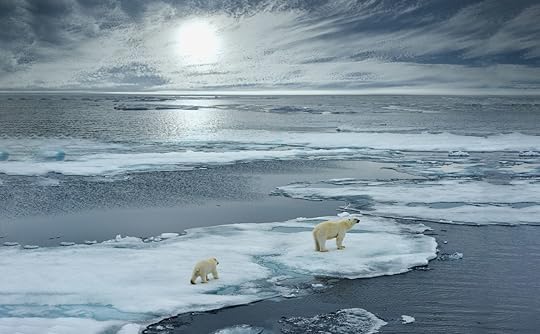
Photo: FloridaStock/Shutterstock
The Norwegian archipelago of Svalbard is extremely far north, sharing a latitude with the top of Greenland. It’s a great place to see polar bears from a ship rather than on land (witnessing polar bears from a distance is the best way to ensure mutual happiness in the encounter.) Basecamp Explorer is a Svalbard outfitter with wildlife-viewing expeditions, as well as bespoke tours for those who seek a more customized experience. The company is outspoken about not disturbing the polar bears, so you know your curiosity won’t be satisfied to the detriment of the animals’ well being.
3. Kaktovik, Alaska
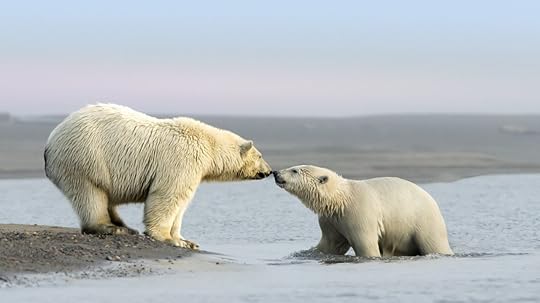
Photo: Jeff Stamer/Shutterstock
Alaska is a giant, wild place, and the people who live and work there are seriously dedicated to the outdoors. It’s also home to a relatively large indigenous population, making for a great opportunity to not only explore ethical wildlife experiences but also contribute to local livelihoods and cultural appreciation. Akook Arctic Adventures is an indigenous-run outfitter in Kaktovik that offers polar bear tours by boat. Polar bears gather here in significant numbers, and that combined with local expertise makes for a really good chance at bear sightings.
4. Wrangel Island, Russia

Photo: Ondrej Prosicky/Shutterstock
Wrangel Island is about as far east as you can go in Russia before hitting Alaska. The plus side of this isolation is that there are not many people around, so wildlife is able to flourish, polar bears included. In September 2017, when a bowhead whale beached on the Arctic island, 230 bears came to feast on it — a sure sign that you should be able to spot at least one on Wrangel Island. Heritage Expeditions has been running cruises around Wrangel Island since 1993, offering viewing expeditions by tundra vehicle. This will get you closer to the animals though it increases the opportunity for conflict. Still, this is an extremely remote part of the world and one of the most unique places in which to witness wild polar bears.
5. Greenland

Photo: BMJ/Shutterstock
Visitors to Iceland often wonder how they miss polar bears when visiting, unaware that they are much more likely to show up on its giant neighbor, Greenland. So, if you’re deciding between trips to Iceland and Greenland, and polar bears are a priority, you know where to go. That said, expect to spend some serious cash, and don’t get your hopes up on actually seeing a bear. They live in the far north and rarely come to land, so a coastal expedition cruise is the way to go. Aurora Expeditions is an Aussie outfitter with a focus on responsible tourism that will give you a great Arctic experience with or without polar bears (but hopefully with).
6. Franz Josef Land, Russia

Photo: Vladimir Melnik/Shutterstock
Five-hundred-and-sixty miles below the North Pole sits a Russian archipelago devoid of non-military human life that’s teeming with wildlife. Spot polar bears among the 191 islands of Franz Josef Land — you may be the first person these bears ever see. Quark Expeditions is experienced in all things polar, bears included, and makes for a great host to take you deep into the isolated Arctic. Its focus on sustainability and responsible travel means never having to worry if the polar bears’ best interests are being taken into consideration.
7. Nunavut, Canada
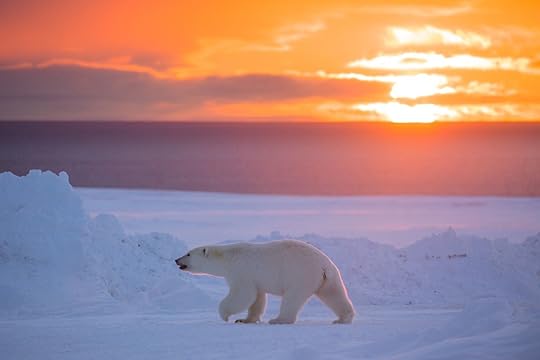
Photo: Kevin Xu Photography/Shutterstock
Nunavut is the newest Canadian Territory and one where you can spot all sorts of amazing Arctic wildlife, including polar bears. The west coast of the Hudson Bay is the route of the polar bear migration when the animals are in search of sea ice, hence the nickname “Polar Bear Alley.” Traveling with Arctic Kingdom, you’ll have the unique experience of a 50-minute, fly-in safari along the coast from Churchill, Manitoba, to a camp south of Arviat in Nunavut, where you’ll stay for eight days. These expeditions only include eight people, so you will be away from the crowds and able to look very closely at these majestic creatures. The lodge’s location is strategically placed to increase the chances of a polar bear encounter, so make sure to have a camera ready. 

More like this: 11 stunning images of Arctic wildlife
The post The 7 best places to see a polar bear in the wild appeared first on Matador Network.

Matador Network's Blog
- Matador Network's profile
- 6 followers



